"Got Milk?" Or is it "Got BHT?"
Got Milk? Then you have a cocktail of chemicals, hormones, medications-all sorts of lovely things-BHT among others. This has become such a marketing big deal that now it's very common to see dairy labels firmly stating the product contains NO BHT.
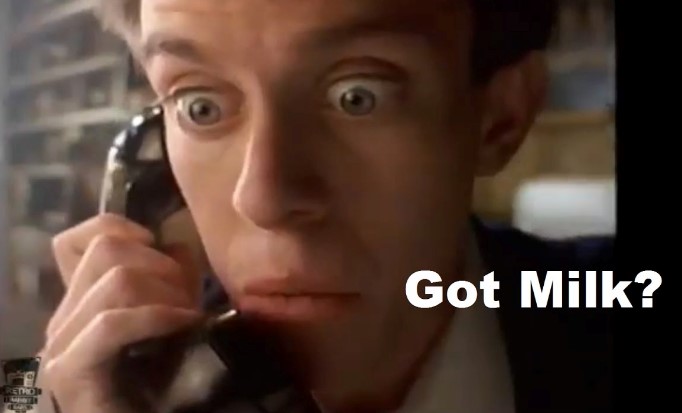
New Zealand, Australia and Japan have banned the use of BHT-Bovine Growth Hormone. Canada will not approve it and the EU has a moratorium against its use and continues to maintain this. The EU also prohibits the sale of any products from rBGH cows. The farmers in these places get along very well without it, however the big business of factory farms in the U.S. keeps on using this hormone.
Back in the '20s, '30s, '40s, and early '50s Americans could buy fresh raw whole milk, real clabber and buttermilk, luscious naturally yellow butter, fresh farm cheeses and cream in various colors and thicknesses. Today's milk is linked to causing everything from allergies to heart disease to cancer, but when Americans could buy Real Milk, these diseases were rare. In fact, a supply of high-quality dairy products was considered vital to American security and the economic well being of the nation.
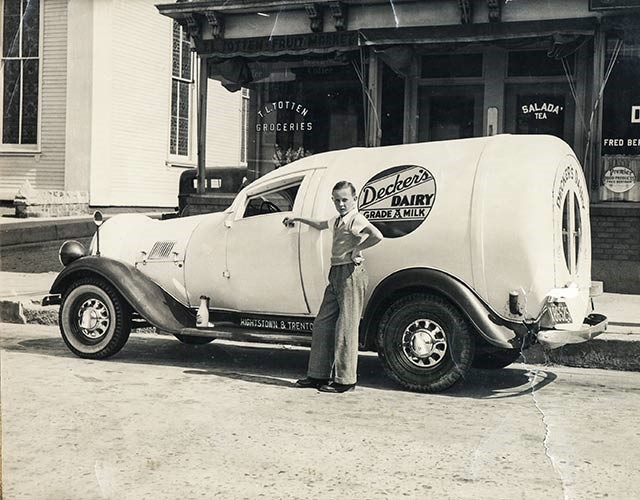
What's needed today is our support of the return to humane, non-toxic, pasture-based dairying and small-scale traditional processing, in short . . . a campaign for REAL MILK! You're seeing more and more brands produced from pasture-raised, non-BHT dairy. Stony Field and Grass Milk are a couple brands I see in my store on a regular basis now.
What cows need to produce healthy dairy products is REAL FEED-green grass in spring, summer and fall; stored dry hay, silage, and root vegetables in winter. They can't produce healthy dairy from chicken manure, bakery waste, soy meal, cottonseed meal or other commercial feeds (that are always laced with pesticides). Vital nutrients like vitamins A and D, and vitamin K2 are greatest in milk from cows eating green grass, especially rapidly growing green grass in the spring and fall.
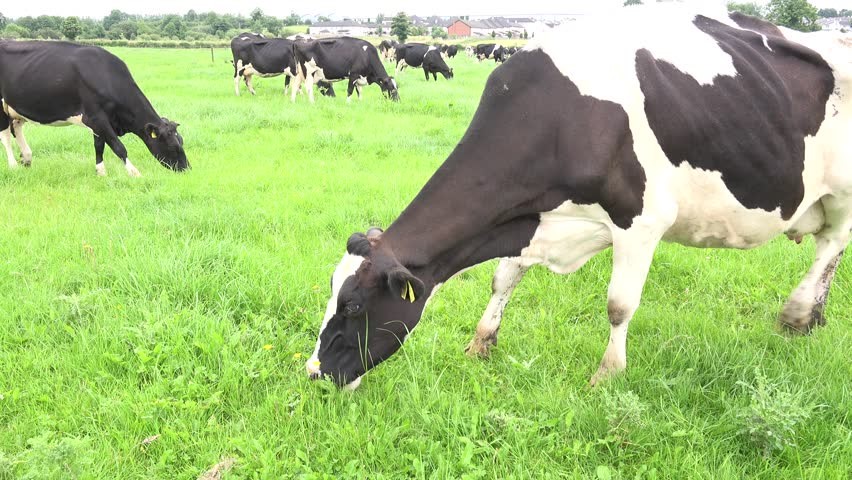
Vitamins A and D are greatly diminished, and vitamin K2 disappears, when milk cows are fed commercial feed. Soy meal has the wrong protein profile for the dairy cow, resulting in a short burst of high milk production followed by premature death. Most milk (even most milk labeled "organic") comes from dairy cows that are kept in confinement their entire lives and never see green grass!
So where can we get non-chemical, non-BHT REAL MILK ? Check out www.realmilk.com. This is a website devoted to campaigning for real milk and keeps a list of local REAL MILK dairies. (Sources of Real Milk in the USA , Sources of Real Milk in other countries).
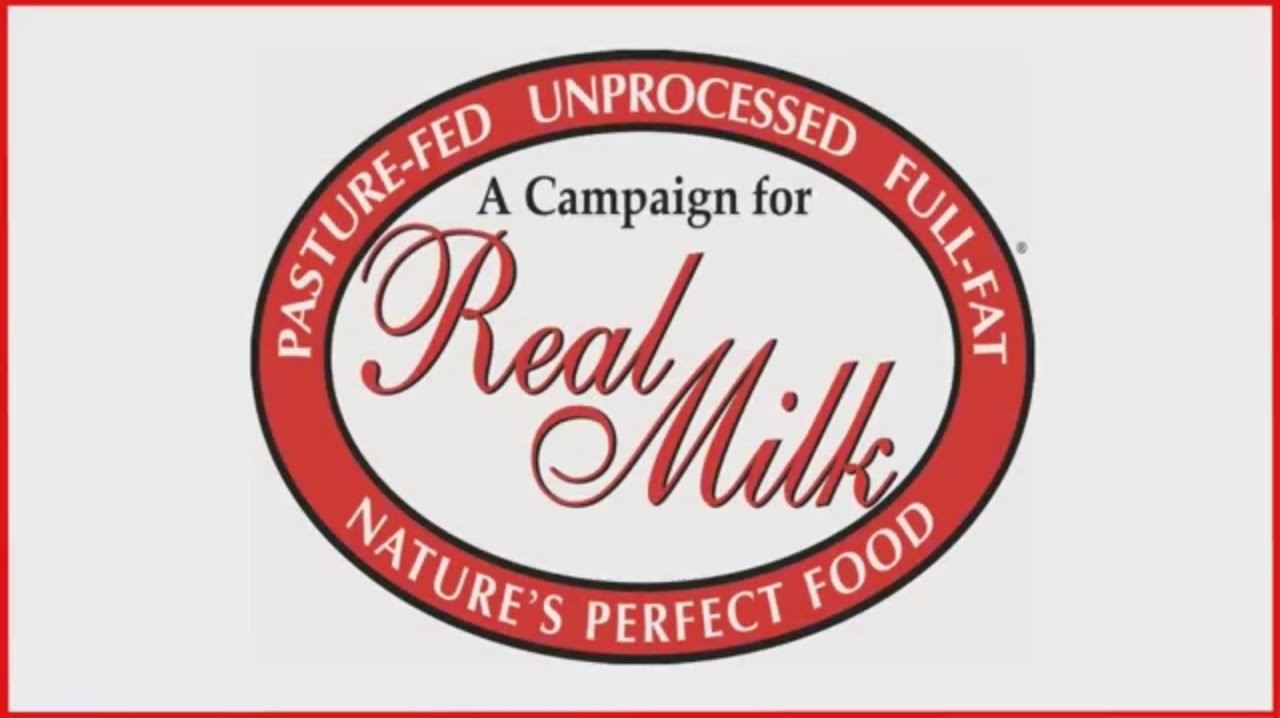
In our area, there are 5 or 6 dairies that sell non-BHT milk from pasture-fed cows. This kind of milk, it runs about $6.50 a gallon. The only way I can afford this is to skip the junk- and processed food aisles. It's worth it to me, however. AND, if we factor in the cream that comes with the milk-we now have 3 products in one gallon: I can make my own chemical-free butter and I can now serve chemical-free whipped cream on my desserts! So all in all, it may not be that expensive, especially when we ask ourselves, "What's our health worth?"
NOW, in case you are lucky enough to have access to this REAL MILK with REAL CREAM right now, here's how to make your own butter that will have a light, fresh taste. You'll need a sturdy food processor or heavy-duty mixer.
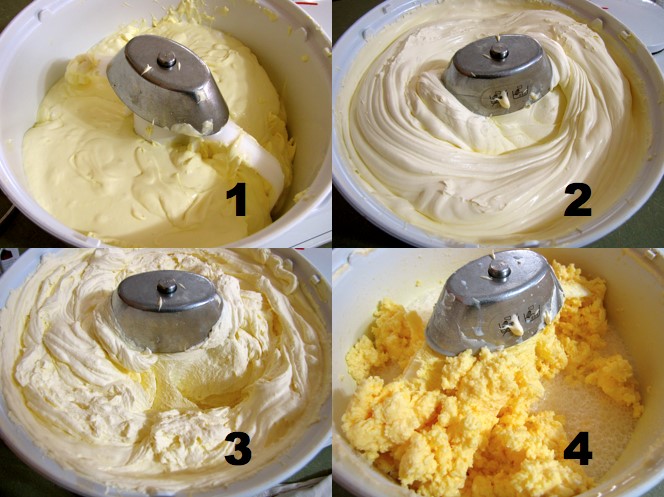
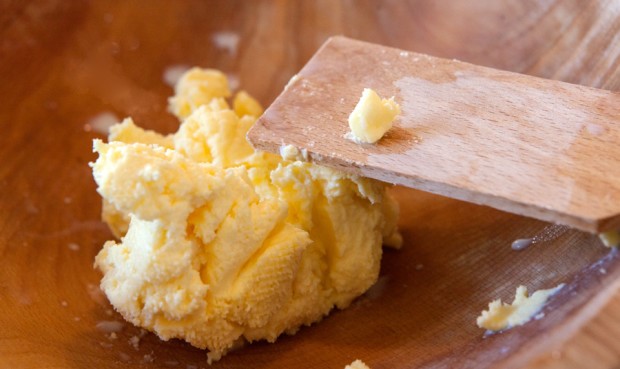
HOMEMADE Butter
Cook time:
Yield: (yield: about half as much butter as amount of cream started with)
Serving size: 1
Calories per serving: 800
1 to 2 cup heavy whipping cream (preferably without carrageenan or other stabilizers)
salt to taste
Directions:
You can eat the butter now -- it has a light taste -- though it will store better if you wash and work it. Add 1/2 cup of ice-cold water, and blend further. Discard wash water and repeat until the wash water is clear. Now, work butter to remove suspended water. Either place damp butter into a cool bowl and knead with a potato masher or two forks; or put in large covered jar, and shake or tumble. Continue working, pouring out the water occasionally, until most of the water is removed. The butter is now ready. Put butter in a butter crock, ramekins, or roll in waxed freezer paper. Salt to taste before working-just a few pinches, is a nice variation.
Recipe formatted with the Cook'n Recipe Software from DVO Enterprises.
- www.healdsburgshed.com
- www.survivalkit.com
- www.realmilk.com
- www.shutterstock.com
- www.rd.com
- www.mumbrella.asia
 Alice Osborne
Alice Osborne
Weekly Newsletter Contributor since 2006
Email the author! alice@dvo.com
